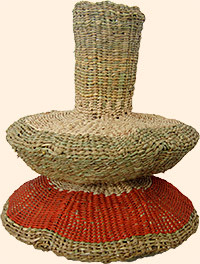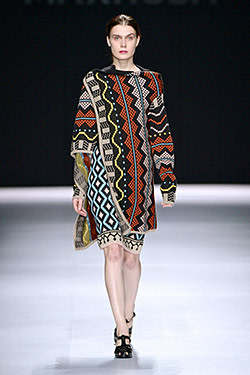Cape Town: World Design Capital 2014

Simply sign up to the Life & Arts myFT Digest -- delivered directly to your inbox.
Alayne Reesberg is quite clear that design isn’t just about the pretty. “It’s much more about the gritty,” says the chief of Cape Town’s year as World Design Capital (WDC) for 2014. “It’s about coping with sewage and making the townships safer places, it’s about making it easier for people to get to work. It’s about transforming the lives of citizens. In South Africa, where we’ve had such a painful history, design is all about turning a city that the apartheid regime designed for separation, into one designed for integration.”
Cape Town wasn’t exactly a slouch in the design department before now. Since 1995, Ravi Naidoo’s Design Indaba conference each February has become a focus for distinguished architects, thinkers, creators and artists from around the world; on the design, furniture and crafts front, Southern Guild, run by Trevyn and Julian McGowan, promotes many of South Africa’s most distinguished designers.
But since it was announced in October 2011 that Cape Town would be the fourth city to be named World Design Capital (after Turin, Seoul and Helsinki), design activity in the city seems to have been turbocharged. While WDC is primarily engaged in doing its best for those who live there – using design to deal with the “gritty”, to restore humanity to some very deprived areas – there are plenty of gains for visitors as well.
A wealth of small initiatives around the theme of design have been devised to make visiting Cape Town a more meaningful and interesting experience than before. Cape Town, these design entrepreneurs want you to know, is about more than fabulous weather, seductive beaches, great restaurants and fancy hotels. It is complex and difficult and sometimes it’s frightening, but it’s never dull. They use design as a tool to explore the underbelly of the nation and to get a much better understanding of what makes the city tick.

But, says Reesberg, who has previously worked as part of Bill Gates’s enterprise division at Microsoft, “These experiences aren’t going to come to your five-star hotel, you have to go out to find them.” And you need a good guide, such as travel specialists Coffeebeans Routes, which will take you into Langa, Cape Town’s oldest township, to meet the people who live there, share a meal with them and see how the Maboneng Township Arts Experience is transforming life for some of its people, turning homes into galleries where you can see and buy some amazing art and meet the artists themselves.
Frances Geoghegan, of travel specialist Africa Travel, says this is increasingly what her clients are looking for. “They want,” she says, “a much more meaningful experience than just sitting on a beach or by a pool. They love going with James Fernie, for instance, to see the township projects his charity Uthando funds and, best of all, they love meeting some of the extraordinary people to be found in the townships.”
The Twelve Apostles Hotel and Spa, a grand hotel near Clifton overlooking the sea, has, for instance, teamed up with Coffeebeans Routes to devise a five-day “Live Design, Transform Life” package. It will take interested guests to the top design attractions, including the edgier townships and artists’ studios, though it makes sure that a bit of grunge is interspersed with splendid meals at some of Cape Town’s most sought-after restaurants, such as The Test Kitchen in Woodstock. The Mount Nelson Hotel, meanwhile, has linked up with Footsteps to Freedom walking tours. Here the emphasis is on history and how design has shaped the city, taking in the journey from the colonial era, through the dark days of apartheid and on to the release of Nelson Mandela and the present day.

But you might not be human if you weren’t also interested in the pretty. The best of South African design borrows from many cultures – Afrikaner, British, Xhosa, Malay, Zulu, Sotho, Shangaan and many more – and the products that emerge have a personality and a character you don’t find elsewhere. Trevyn McGowan says: “Craft is very old in Africa but design is very young. Part of the global appeal of contemporary South African design is that it’s incredibly human. It relates to people in quite a primal way. It is emotional, it taps into memory and often tells a strong and moving story.”
The country’s design ethos takes unpromising, often discarded, materials and turns them into things that one longs to own. Baskets made from telephone wire are the best-known examples.
If you only have time to go to one shop, it should be Margie Murgatroyd’s Africa Nova in Green Point. While her wares are sophisticated in the best sense of the word, they also carry the hallmark of an authentic African spirit. Go for telephone wire baskets or Astrid Dahl’s botanically inspired ceramics or Margy Malan’s exquisite tableware. Look out, too, for Milene Sennett’s gorgeous jewellery, an amalgam of old trading beads, amber and other stones and metals.

Merchants on Long, started on Long Street by Hanneli Rupert, whose father Johann heads up global luxury conglomerate Richemont, sells Laduma Ngxokolo’s knitwear, imbued with Xhosa decorative motifs, as well as Sindiso Khumalo’s print-crazy shirts and jewellery by Guidemore that incorporates ancient trading beads with recycled glass. On nearby Kloof Nek Road, find the props for a sophisticated safari at Cécile & Boyd’s shop. Amble along both of these streets and you’ll find a mixture of old African tribal pieces mixed with a peculiarly South African take on where modern design is. And, in a year or two, there will be an added reason for visiting. Jochen Zeitz, who made his name at Puma and now owns the 50,000-acre Segera ranch in Kenya, is funding the transformation of an old grain silo into the largest collection of African art in the world. Overseeing the project is British designer Thomas Heatherwick.
As for where the visiting design expert should stay – MannaBay is a new little jewel right underneath Table Mountain that interior designer Joe Jacob has imbued with an extravagant joyousness to lift the spirits. Ask for the Versailles suite for its wonderful views over the harbour and out to sea. Breakfasts are fabulous and they provide complimentary transport to and from whatever restaurant you fancy for dinner. Also new, the 11-room The Marly at Camps Bay has its drawbacks (a car park doesn’t make for a great entrance) but it has a certain cuteness. The prime reason for staying here, however, is that it is just across the road from Camps Bay’s lovely curving beach. I can scarcely think of a better way to start the day than on your own balcony watching the waves as you munch your croissant.
Africa Travel (africatravel.com) arranges holidays to south and east Africa. A trip to Cape Town, staying for five nights with breakfast at MannaBay, costs from £1,775 per person including flights and car hire
——————————————-
Details
——————————————-
Cultural calendar
Spring 2014: design fairs and shows
1. Milan Salone del Mobile, citywide, April 8-13
Once simply the place to see the latest chairs, sofas, lighting and desks, the biggest international design fair of the year is now also testament to the collapsing boundaries between art, furniture, fashion and science, writes Caroline Roux. See this weekend’s House & Home special interiors supplement for more on the fair and its satellite shows.
2. Konstantin Grcic: Panorama. Vitra Design Museum, Weil-am-Rhein, Germany. Until Sept 14

The Munich-based industrial designer has produced some of today’s most popular products, including Chair One and the pert Miura stool (almost certainly used in a café near you). In this show, Grcic has placed a selection of his past designs into imaginary, sometimes dystopian, scenarios to analyse how we live now – and might in the near future.
3. PMQ, Aberdeen Road, Hong Kong, opening in May
This newly renovated building is the former Police Married Quarters (PMQ). Its long-awaited reopening this spring provides a chic new home for local artists, craft workers and makers, offering affordable work and sales space to young designers as well as pop-up stores.
4. What Design Can Do, Amsterdam, May 8-9
A neatly packaged festival and weekend conference, this year offering insights into design’s power to bring social change. “Design” here covers many things – from innovative South African knitwear (of the sort extolled above by Lucia Van Der Post) to Chineasy, the beautifully presented new programme for teaching Chinese, developed by the venture capitalist and internet entrepreneur Shaolan Hsueh. Those who prefer more old-fashioned values can gravitate towards the comforting presence of Sir Paul Smith.
5. Design Miami, Basel. June 17-22
This European offshoot of the American fair runs alongside the giant Art Basel and is the place to hunt for vintage pieces from masters of 20th-century design. This includes work by Brazilian modernist Joaquin Tenreiro (prices on request) and jeweller Claude Lalanne, whose pieces are priced from £3,000 to £30,000).
6. Troika: Persistent Illusions. Daelim Contemporary Art Museum, Seoul. April 10-October 12.

Troika are one French and two German designers based in London, and in this museum exhibition they experiment with a range of mediums, disciplines and materials to create innovative installations and work. “Arcades”, for example, is made up of seven arches made of light that appear to bend.
7. Re: Collection. Museum of Art and Design New York, April 1-Sept 7
An exhibition showcasing some of the acquisitions made over the past 16 years by David McFadden, the Museum of Art and Design’s curator emeritus. McFadden is not the sort of man whose head is turned by the populist promise of a 3D printer, and, though technology has exerted a subtle influence on several pieces shown here, the primary concerns are materials and the imagination, with work by Judy Chicago, James Turrell and others.
Comments